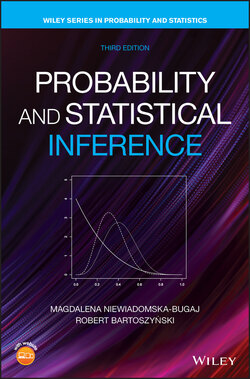Читать книгу Probability and Statistical Inference - Robert Bartoszynski - Страница 62
Problems
Оглавление1 2.5.1 A coin is tossed seven times. Assume that each of the possible outcomes (sequences like HTTHHTH of length 7) is equally likely. Relate each outcome to a binary number by replacing H by 1 and T by 0, for example, THHHTTH is 0111001 = 57. Find the probability that a number generated in this way lies between 64 and 95 (inclusive on both sides).
2 2.5.2 A number is chosen at random from the series 4, 9, 14, 19, …, and another number is chosen from the series 1, 5, 9, 13, …. Each series has 100 terms. Find .
3 2.5.3 A regular die and a die with 2, 3, 5, 6, 7, and 8 dots are tossed together, and the total number of dots is noted. What is the probability that the sum is greater than or equal to 10?
4 2.5.4 Use formula (2.6) to find the number of primes not exceeding 100. [Hint: Assume that you sample one of the numbers 1, 2, …, 100. Let be the event “the number sampled is divisible by .” Determine . Then the answer to the problem is (why?).]
